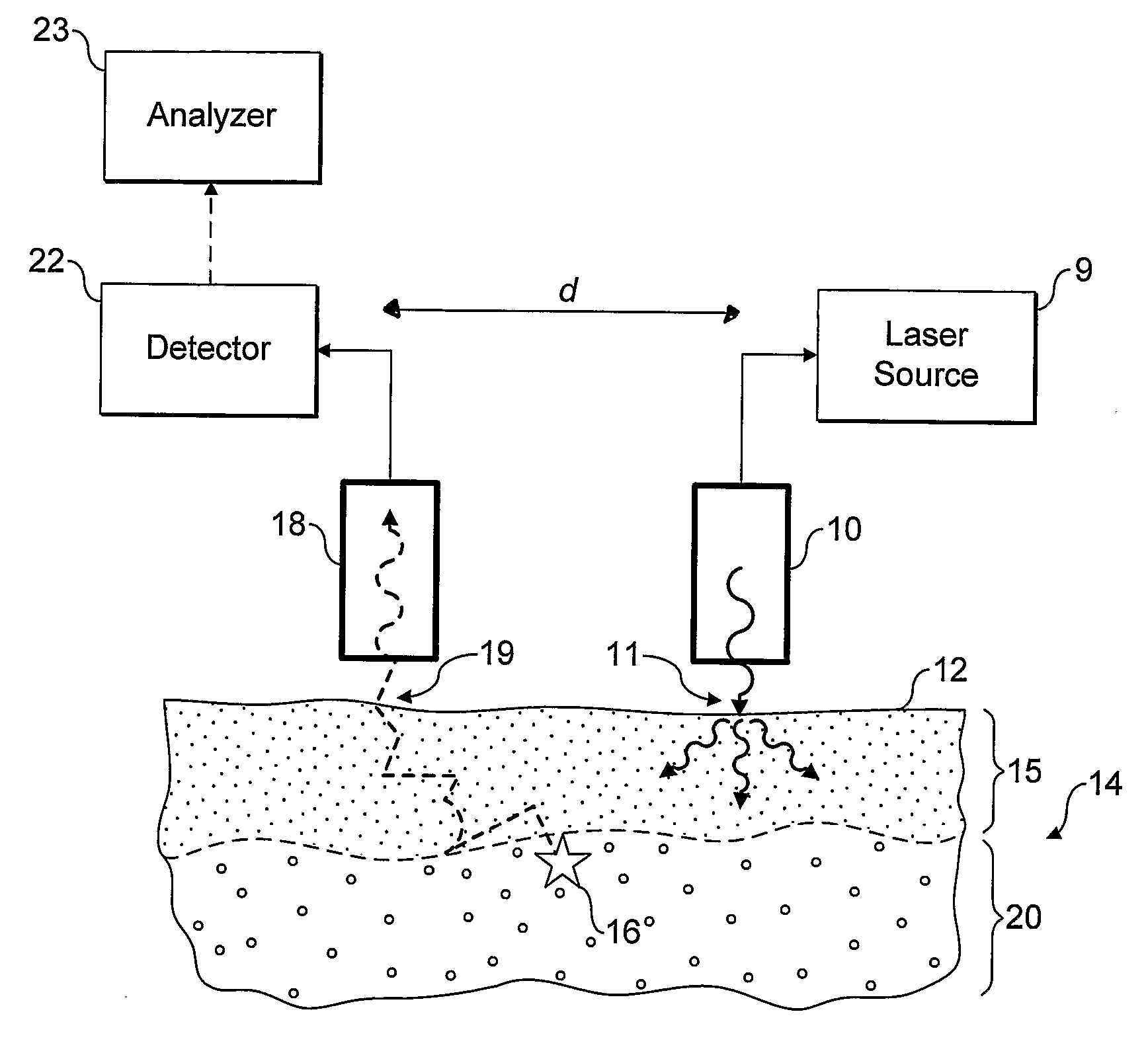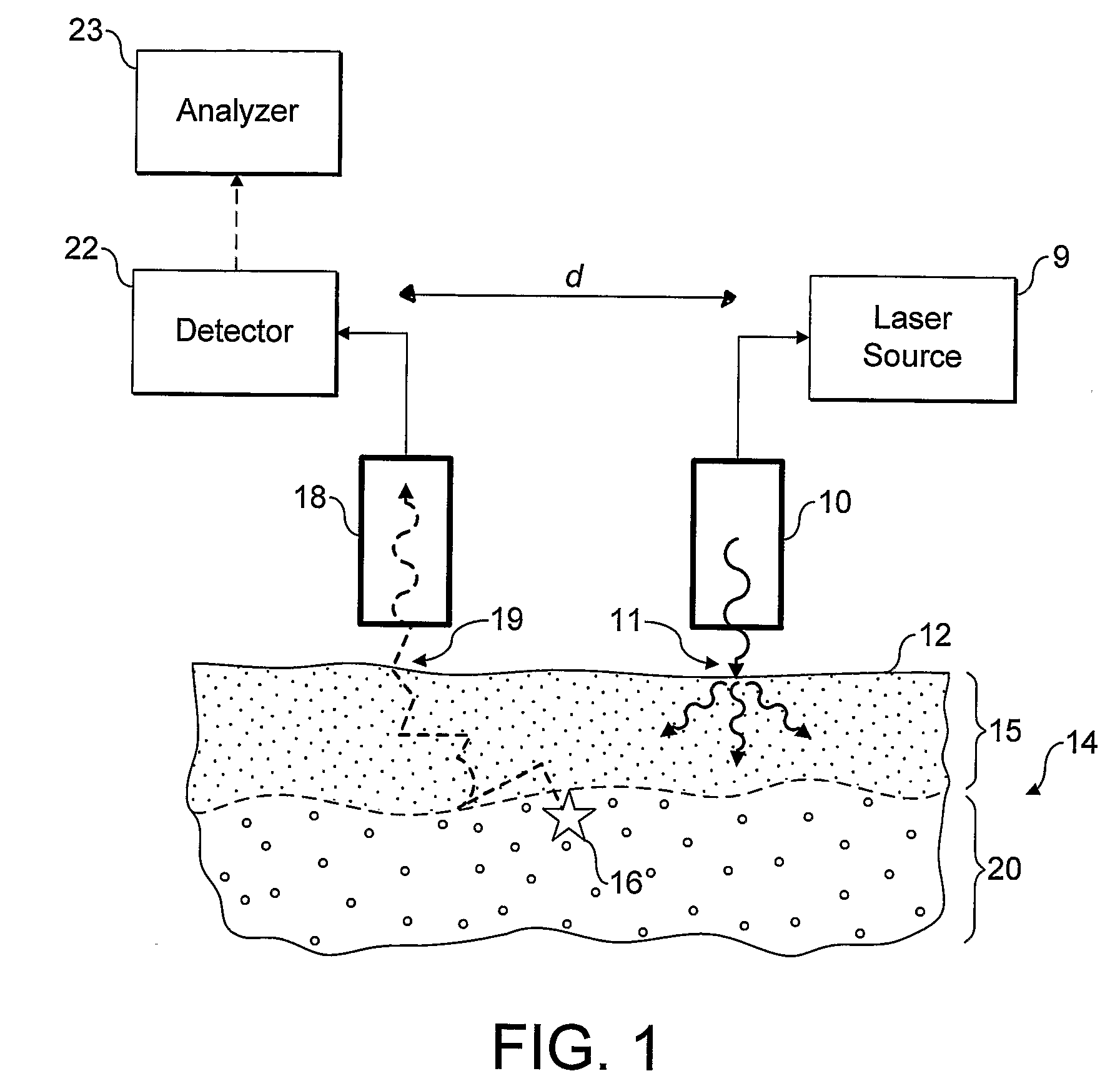Raman Spectral Analysis Of Sub-Surface Tissues And Fluids
a subsurface tissue and spectral analysis technology, applied in the direction of optical radiation measurement, diagnostics using spectroscopy, instruments, etc., can solve the problems of few non-invasive or minimally invasive methods for examining bone details, the risk of bone fracture in the normal population of people with osteoporosis is significantly increased, and the sacrificial procedure is clearly not an option in examining human patients
- Summary
- Abstract
- Description
- Claims
- Application Information
AI Technical Summary
Benefits of technology
Problems solved by technology
Method used
Image
Examples
Embodiment Construction
[0058] Referring now to FIG. 1 an embodiment of the invention is shown in operation, in schematic cross section. A light source 10, incorporating or supplied by laser 9, is used to irradiate localised entry region of a surface 12 of in-vivo tissue 14, which in the present example is made up of a skin layer 15 and underlying bone tissue 20. The incident radiation from the light source is scattered diffusely through the sample, especially the upper skin layer. Some of the radiation may be absorbed by the tissue, some may give rise to optical emissions for example by fluorescence, and some re-emerges unchanged through the tissue surface 12.
[0059] A small proportion of the photons of the incident radiation are inelastically scattered giving rise to Raman photons, for example as illustrated by Raman event 16. The Raman photons in turn are diffusively scattered through the tissue. Some may be absorbed, for example giving rise to fluorescence, but some emerge unchanged through the surface...
PUM
| Property | Measurement | Unit |
|---|---|---|
| wavelength | aaaaa | aaaaa |
| wavelength | aaaaa | aaaaa |
| wavelength | aaaaa | aaaaa |
Abstract
Description
Claims
Application Information
 Login to View More
Login to View More - R&D
- Intellectual Property
- Life Sciences
- Materials
- Tech Scout
- Unparalleled Data Quality
- Higher Quality Content
- 60% Fewer Hallucinations
Browse by: Latest US Patents, China's latest patents, Technical Efficacy Thesaurus, Application Domain, Technology Topic, Popular Technical Reports.
© 2025 PatSnap. All rights reserved.Legal|Privacy policy|Modern Slavery Act Transparency Statement|Sitemap|About US| Contact US: help@patsnap.com



